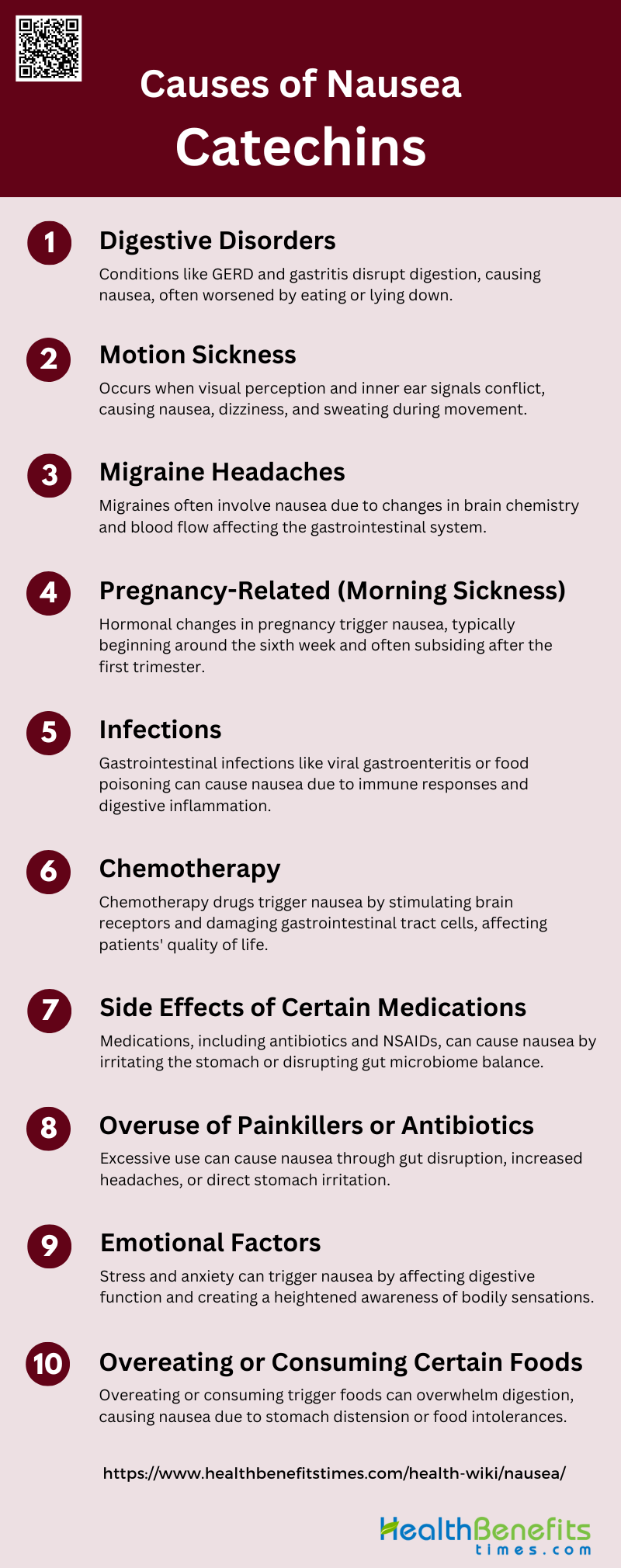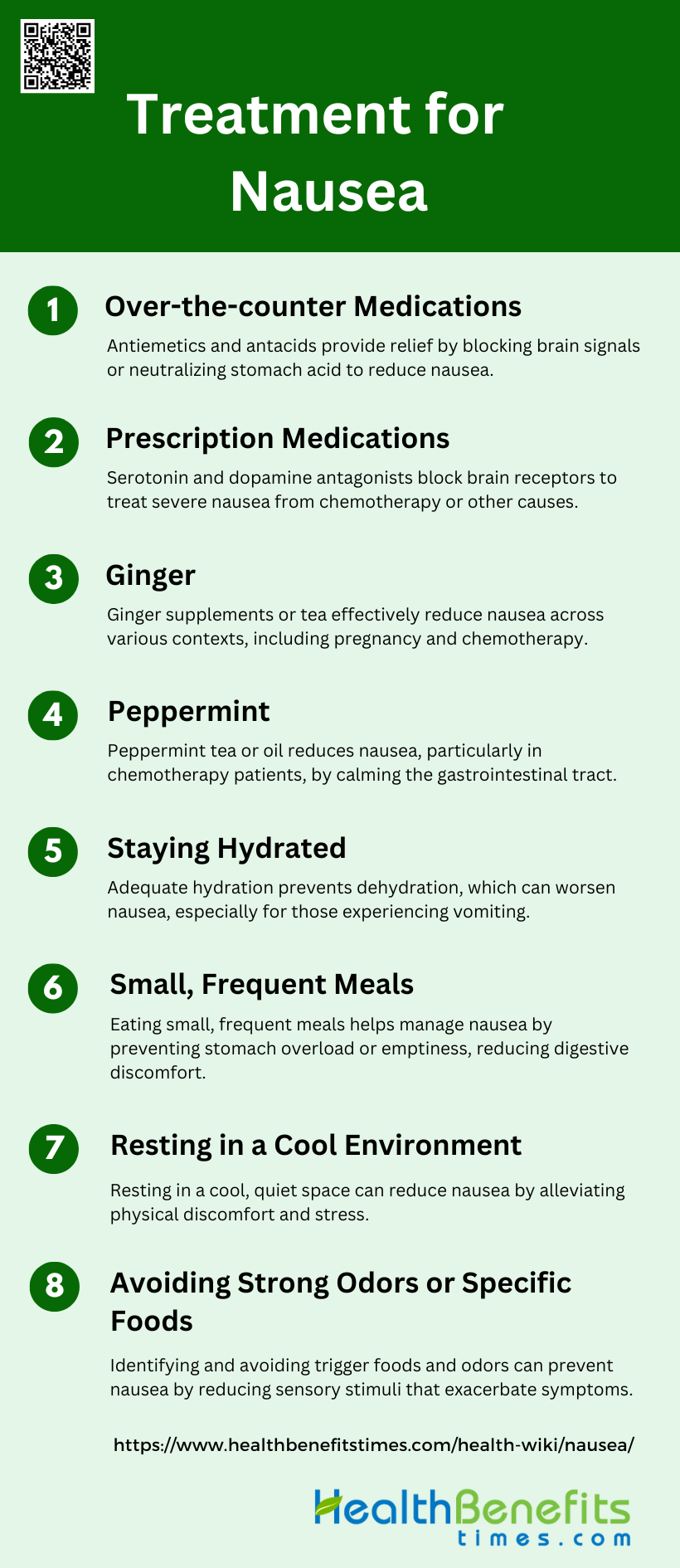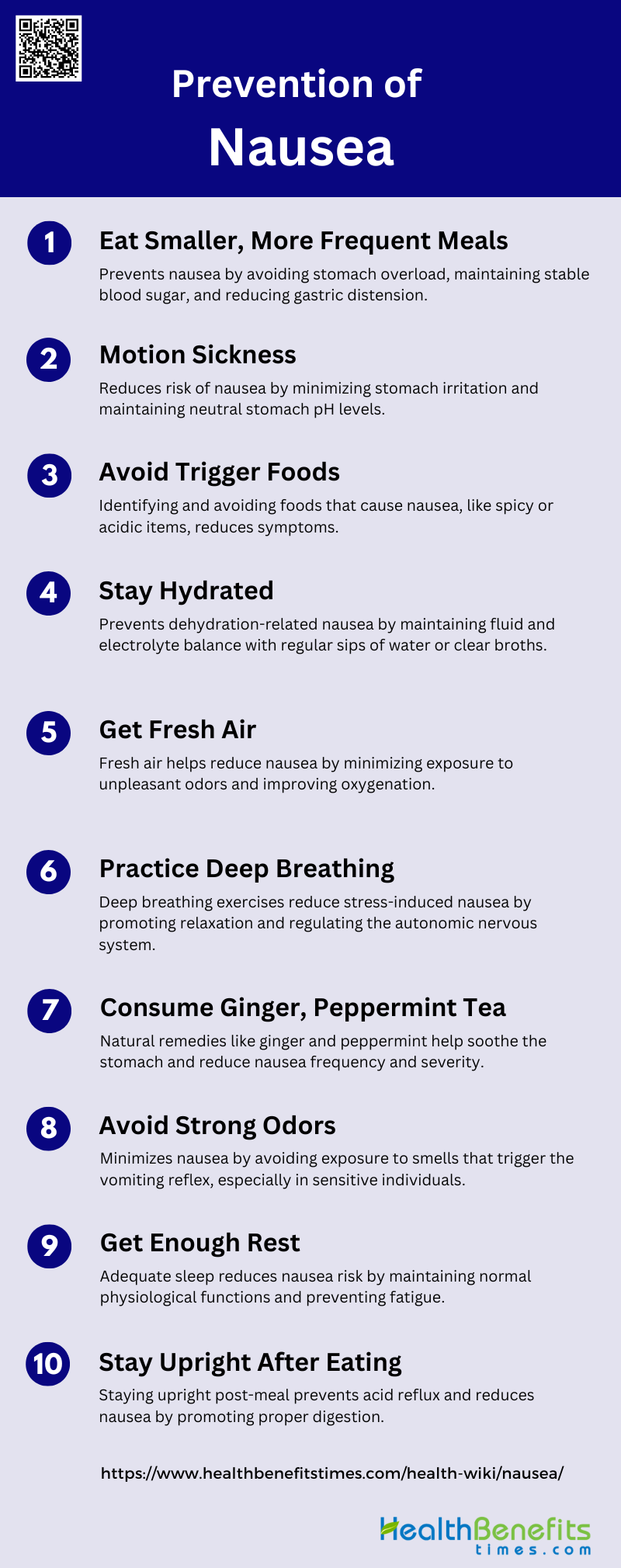Nausea is a complex and unpleasant sensation characterized by the urge to vomit, often accompanied by symptoms such as sweating, increased salivation, and a feeling of discomfort in the stomach or upper abdomen. It is a subjective experience that can vary in intensity and duration, ranging from mild queasiness to severe distress. Nausea can be triggered by various factors, including certain medications, medical conditions, pregnancy, motion sickness, and psychological stress. While nausea itself is not a disease, it is often a symptom of underlying issues and can significantly impact a person’s quality of life, affecting their appetite, daily activities, and overall well-being. Understanding the mechanisms behind nausea is crucial for developing effective management strategies and treatments for this common yet complex sensation.
Differentiate between nausea and vomiting
Nausea and vomiting, though often occurring together, are distinct phenomena with different characteristics and mechanisms. Nausea is an unpleasant sensation in the upper abdomen or back of the throat, often described as feeling queasy or sick to the stomach, and is associated with an urge to vomit. It can be accompanied by other symptoms such as increased saliva, dizziness, and a fast heart rate. Vomiting, on the other hand, is the forceful expulsion of stomach contents through the mouth, initiated by the vomiting center in the brain. While nausea can occur without vomiting, vomiting typically follows nausea but can also occur independently. Both symptoms serve as protective reflexes to prevent the absorption of toxins, but they can also result from a variety of other stimuli, including gastrointestinal, metabolic, and psychological factors.
Symptoms of nausea
Nausea is a subjective and unpleasant sensation often described as feeling queasy or having an upset stomach, which can lead to vomiting. It is frequently accompanied by other symptoms such as:
- Vomiting
- Lack of appetite
- Excess saliva in the mouth
- Sweating
- Stomach ache or abdominal pain
- Uneasy feeling in the chest, upper abdomen, or back of the throat
- Fatigue
- Dizziness
- Weakness
- Retching
- Headache
- Diarrhea
- Fever
- Dehydration
Causes of Nausea
Nausea is a common and uncomfortable sensation that can be triggered by various factors. Understanding the underlying causes is crucial for effective management and relief. Below are some of the primary causes of nausea:
1. Digestive Disorders
Digestive disorders such as gastroesophageal reflux disease (GERD) and gastritis are common causes of nausea. GERD occurs when stomach acid frequently flows back into the esophagus, irritating its lining and causing a burning sensation and nausea. Gastritis, an inflammation of the stomach lining, can result from bacterial infections, excessive alcohol consumption, or prolonged use of certain medications. These conditions disrupt the normal digestive process, leading to symptoms like bloating, abdominal pain, and nausea. The nausea experienced in these cases is often accompanied by other gastrointestinal symptoms and may worsen after eating or when lying down. Proper diagnosis and treatment of the underlying digestive disorder are crucial for managing nausea effectively.
2. Motion Sickness
Motion sickness is a common cause of nausea that occurs when there’s a mismatch between visual perception and the vestibular system’s sense of movement. This discrepancy can happen during car rides, boat trips, or even while using virtual reality devices. The brain receives conflicting signals about the body’s position and movement, triggering symptoms such as dizziness, sweating, and nausea. Some people are more susceptible to motion sickness due to genetic factors or increased sensitivity to motion. The nausea associated with motion sickness typically subsides once the movement stops or the person adapts to the motion. Various strategies, including focusing on a stable point, getting fresh air, and using anti-motion sickness medications, can help alleviate symptoms.
3. Migraine Headaches
Migraine headaches are often accompanied by nausea, making it a significant symptom of this neurological condition. During a migraine attack, changes in brain chemistry and blood flow can affect the gastrointestinal system, leading to nausea and sometimes vomiting. The nausea associated with migraines can occur before, during, or after the headache phase and may persist even without head pain. For some individuals, nausea can be as debilitating as the headache itself, interfering with daily activities and quality of life. The relationship between migraines and nausea is complex, involving neurotransmitters like serotonin and the activation of specific brain regions. Treating the underlying migraine often helps alleviate associated nausea.
4. Pregnancy-Related (morning sickness)
Morning sickness, despite its name, can occur at any time of the day and is a common cause of nausea during pregnancy. It typically begins around the sixth week of pregnancy and often subsides by the end of the first trimester, although some women experience it throughout their pregnancy. The exact cause is not fully understood, but hormonal changes, particularly increased levels of human chorionic gonadotropin (hCG) and estrogen, are believed to play a significant role. Other factors, such as heightened sense of smell and gastrointestinal changes during pregnancy, may contribute to nausea. While unpleasant, morning sickness is generally not harmful to the baby and is often considered a sign of a healthy pregnancy.
5. Infections
Various infections, particularly those affecting the gastrointestinal system, can cause nausea. Viral gastroenteritis, commonly known as stomach flu, is a frequent culprit. This infection inflames the stomach and intestines, leading to symptoms like nausea, vomiting, and diarrhea. Other infections that can cause nausea include food poisoning, caused by consuming contaminated food or water, and systemic infections like influenza. The nausea in these cases is often a result of the body’s immune response to the pathogen and the direct effects of the infection on the digestive system. Most infection-related nausea resolves as the body fights off the infection, but staying hydrated and getting adequate rest are crucial for recovery.
6. Chemotherapy
Chemotherapy-induced nausea and vomiting (CINV) is a common and distressing side effect of cancer treatment. The severity and duration of CINV can vary depending on the specific chemotherapy drugs used, dosage, and individual patient factors. Chemotherapy drugs can trigger nausea by activating neurotransmitter receptors in the brain and gut, stimulating the vomiting center in the brain. Additionally, these drugs can damage the cells lining the gastrointestinal tract, further contributing to nausea. CINV can significantly impact a patient’s quality of life, potentially leading to treatment delays or discontinuation. Modern antiemetic medications and supportive care strategies have greatly improved the management of chemotherapy-related nausea, allowing many patients to complete their treatment with reduced discomfort.
7. Side Effects of Certain Medications
Many medications can cause nausea as a side effect, affecting patients’ comfort and compliance with treatment. Common culprits include antibiotics, which can disrupt the gut microbiome, and nonsteroidal anti-inflammatory drugs (NSAIDs) that may irritate the stomach lining. Other medications like opioid painkillers, antidepressants, and some blood pressure medications can also induce nausea through various mechanisms. The nausea may be temporary as the body adjusts to the medication or persist throughout the treatment. In some cases, changing the dosage, timing of administration, or switching to an alternative medication can help alleviate medication-induced nausea. It’s crucial for patients to communicate with their healthcare providers about any persistent nausea to find the best solution.
8. Overuse of Painkillers or Antibiotics
Excessive use of painkillers, particularly opioids and NSAIDs, can lead to a condition known as medication overuse headache (MOH), which is often accompanied by nausea. This paradoxical effect occurs when pain medications are used too frequently, leading to increased headache frequency and associated symptoms like nausea. Similarly, overuse of antibiotics can disrupt the natural balance of gut bacteria, potentially causing nausea and other gastrointestinal symptoms. The altered gut microbiome can affect digestion and immune function, contributing to feelings of nausea. Additionally, some antibiotics can directly irritate the stomach lining. It’s crucial to use these medications as prescribed and to be aware of potential risks associated with overuse.
9. Emotional Factors
Emotional factors such as stress and anxiety can significantly contribute to feelings of nausea. The brain-gut connection plays a crucial role in this phenomenon, with stress hormones affecting digestive function and potentially triggering nausea. Anxiety can lead to hyperawareness of bodily sensations, amplifying feelings of nausea. In some cases, anticipatory nausea may develop, where the mere thought of a stressful situation can induce nausea. Chronic stress can also alter gut motility and secretion patterns, further contributing to digestive discomfort and nausea. Managing stress through relaxation techniques, cognitive-behavioral therapy, or other stress-reduction methods can often help alleviate stress-induced nausea and improve overall well-being.
10. Overeating or Consuming Certain Foods
Overeating or consuming certain types of foods can lead to nausea by overwhelming the digestive system or triggering specific sensitivities. When we overeat, the stomach stretches beyond its normal capacity, potentially leading to discomfort and nausea. Foods high in fat, spice, or sugar can be particularly problematic for some individuals, slowing digestion or causing irritation. Additionally, food intolerances or allergies can cause nausea as part of the body’s immune response. Certain odors or textures of food can also trigger nausea in sensitive individuals. Practicing mindful eating, avoiding known trigger foods, and eating smaller, more frequent meals can help prevent food-related nausea and promote better digestive health.
Treatment for Nausea
Nausea can be an unsettling experience, but there are several effective treatments available to alleviate this discomfort. Identifying the right treatment depends on the underlying cause and the severity of the symptoms. Below are some common treatments for nausea:
1. Over-the-counter Medications (Antiemetics, Antacids)
Over-the-counter antiemetics and antacids are commonly used to manage nausea. Antiemetics like dimenhydrinate and meclizine can help reduce nausea by blocking certain signals in the brain that trigger vomiting. Antacids, on the other hand, neutralize stomach acid and can be effective in treating nausea caused by acid reflux or indigestion. These medications are generally accessible and can provide quick relief for mild to moderate nausea.
2. Prescription Medications (Serotonin receptor antagonists, Dopamine antagonists)
Prescription medications such as serotonin receptor antagonists (e.g., ondansetron) and dopamine antagonists (e.g., metoclopramide) are often used for more severe cases of nausea, including chemotherapy-induced nausea and vomiting (CINV). These medications work by blocking the receptors in the brain that trigger nausea and vomiting, providing significant relief for patients undergoing treatments that cause severe nausea.
3. Ginger (tea, supplements)
Ginger has been extensively studied for its anti-nausea properties. Multiple studies have shown that ginger supplements can significantly reduce nausea in various contexts, including chemotherapy-induced nausea, postoperative nausea, and pregnancy-related nausea. Ginger tea is also effective and can be a soothing way to consume ginger, making it a versatile option for managing nausea.
4. Peppermint (tea, essential oils)
Peppermint has been found to be effective in reducing nausea, particularly in cancer patients undergoing chemotherapy. Studies have shown that peppermint oil, when inhaled or applied topically, can significantly reduce the frequency and severity of nausea, vomiting, and retching. Peppermint tea can also provide relief and is a simple, natural remedy for nausea.
5. Staying Hydrated
Staying hydrated is crucial in managing nausea, as dehydration can exacerbate symptoms. Drinking small sips of water, clear broths, or oral rehydration solutions can help maintain fluid balance and prevent dehydration, which can worsen nausea. Hydration is particularly important for patients experiencing vomiting, as it helps replace lost fluids and electrolytes.
6. Small, Frequent Meals
Eating small, frequent meals can help manage nausea by preventing the stomach from becoming too full or too empty, both of which can trigger nausea. This approach can help maintain steady blood sugar levels and reduce the likelihood of nausea. Foods that are bland and easy to digest, such as crackers, toast, and bananas, are often recommended.
7. Resting in a Cool Environment
Resting in a cool environment can help alleviate nausea by reducing physical stress and discomfort. A cool, quiet space can provide a calming effect, which may help reduce the sensation of nausea. This is particularly beneficial for individuals experiencing nausea due to heat or physical exertion.
8. Avoiding Strong Odors or Specific Foods
Avoiding strong odors and specific foods that trigger nausea is a practical approach to managing symptoms. Foods that are greasy, spicy, or have strong smells can often exacerbate nausea. Identifying and avoiding these triggers can help reduce the frequency and severity of nausea episodes.
Prevention of Nausea
Preventing nausea involves adopting certain lifestyle changes and dietary adjustments that can help minimize the risk of this unpleasant sensation. By understanding and avoiding common triggers, one can significantly reduce the occurrence of nausea. Below are some effective strategies for preventing nausea:
1. Eat smaller, more frequent meals
Eating smaller, more frequent meals can help prevent nausea by avoiding overloading the stomach, which can trigger nausea and vomiting. This approach helps maintain stable blood sugar levels and reduces the likelihood of gastric distension, which can stimulate the vomiting center in the brain. Studies have shown that managing meal size and frequency can be particularly beneficial for patients undergoing chemotherapy or postoperative recovery, as it minimizes the risk of nausea and vomiting by preventing the stomach from becoming too full or empty.
2. Choose bland, easily digestible foods
Opting for bland, easily digestible foods can significantly reduce the risk of nausea. Foods such as crackers, toast, rice, and bananas are less likely to irritate the stomach lining or cause gastric discomfort. These foods are gentle on the digestive system and can help maintain a neutral pH balance in the stomach, which is crucial for preventing nausea. Research indicates that patients who consume bland diets experience fewer episodes of nausea and vomiting, particularly in postoperative and chemotherapy settings.
3. Avoid trigger foods
Avoiding foods that are known to trigger nausea is essential for prevention. Common trigger foods include those that are spicy, fatty, or highly acidic. These foods can irritate the stomach lining and exacerbate symptoms of nausea. Studies have shown that identifying and avoiding personal trigger foods can significantly reduce the incidence of nausea and vomiting in patients recovering from surgery or undergoing chemotherapy.
4. Stay hydrated
Staying hydrated is crucial in preventing nausea. Dehydration can lead to electrolyte imbalances and reduced blood volume, which can trigger nausea. Drinking small sips of water, herbal teas, or clear broths throughout the day can help maintain hydration levels without overwhelming the stomach. Research supports the importance of hydration in managing nausea, particularly in postoperative and chemotherapy patients, as it helps maintain overall bodily functions and reduces the risk of nausea.
5. Get fresh air
Getting fresh air can help alleviate nausea by providing a distraction and reducing the perception of unpleasant odors that can trigger nausea. Fresh air can also help improve oxygen levels in the blood, which can reduce feelings of dizziness and nausea. Studies have shown that patients who spend time outdoors or in well-ventilated areas experience fewer episodes of nausea and vomiting, particularly in postoperative and chemotherapy settings.
6. Practice deep breathing
Practicing deep breathing exercises can help prevent nausea by promoting relaxation and reducing stress, which are common triggers for nausea. Deep breathing increases oxygen flow to the brain and helps regulate the autonomic nervous system, which can reduce the sensation of nausea. Research indicates that deep breathing techniques are effective in managing nausea, particularly in patients undergoing chemotherapy or recovering from surgery.
7. Consume ginger, peppermint tea
Consuming ginger or peppermint tea is a well-known natural remedy for nausea. Ginger has anti-inflammatory properties and can help soothe the stomach lining, while peppermint has a calming effect on the gastrointestinal tract. Studies have shown that ginger and peppermint are effective in reducing the severity and frequency of nausea and vomiting in postoperative and chemotherapy patients.
8. Avoid strong odors
Avoiding strong odors is crucial in preventing nausea, as certain smells can trigger the vomiting reflex. Strong odors from foods, perfumes, or chemicals can stimulate the olfactory system and lead to nausea. Research supports the importance of avoiding strong odors in managing nausea, particularly in postoperative and chemotherapy patients, as it helps reduce sensory overload and the risk of nausea.
9. Get enough rest
Getting enough rest is essential in preventing nausea, as fatigue and lack of sleep can exacerbate symptoms. Adequate rest helps the body recover and maintain normal physiological functions, which can reduce the likelihood of nausea. Studies have shown that patients who get sufficient rest experience fewer episodes of nausea and vomiting, particularly in postoperative and chemotherapy settings.
10. Stay upright after eating
Staying upright after eating can help prevent nausea by promoting proper digestion and reducing the risk of acid reflux. Lying down immediately after eating can cause stomach contents to move back up into the esophagus, leading to nausea and vomiting. Research indicates that maintaining an upright position for at least 30 minutes after meals can significantly reduce the incidence of nausea, particularly in postoperative and chemotherapy patients.
When to See a Doctor for Nausea
Warning Signs of Severe or Persistent Nausea
Severe or persistent nausea can be indicative of underlying health issues that require medical attention. Warning signs include dehydration, characterized by dry mucous membranes and low blood pressure, as seen in a 20-year-old woman who experienced significant weight loss and dehydration due to persistent nausea and vomiting. Additionally, chronic nausea and vomiting lasting more than four weeks can signal serious gastrointestinal or non-gastrointestinal disorders, such as gastroparesis or cyclic vomiting syndrome. Other red flags include vomiting blood, unexplained weight loss, and severe fatigue, which necessitate prompt medical evaluation to prevent complications like electrolyte imbalances and metabolic disturbances.
Conditions That Require Medical Attention
Certain conditions associated with nausea necessitate immediate medical intervention. Dehydration, often resulting from excessive vomiting, can lead to electrolyte imbalances and hemodynamic instability, as observed in patients with hyperemesis gravidarum (HG). Unexplained weight loss, as seen in a young woman who lost 9 kg over four months due to persistent nausea, also warrants medical evaluation to rule out serious underlying conditions. Vomiting blood is a critical sign that could indicate gastrointestinal bleeding and requires urgent care. Chronic nausea and vomiting, especially when accompanied by normal gastric emptying, can be a significant medical problem, often indistinguishable from gastroparesis, and should be thoroughly investigated.
FAQs
1. Can nausea be a symptom of anxiety or panic attacks?
Yes, nausea can be a common symptom of anxiety or panic attacks. The brain-gut connection means that emotional stress and anxiety can directly affect the digestive system, leading to nausea.
2. Are there any long-term complications of chronic nausea?
Chronic nausea can lead to complications such as malnutrition, dehydration, weight loss, and electrolyte imbalances. It can also negatively impact mental health, leading to anxiety, depression, and reduced quality of life.
3. Is nausea more common in certain age groups or genders?
Nausea can affect people of all ages, but certain types, such as morning sickness, are more common in pregnant women. Motion sickness and nausea related to anxiety are also more prevalent in women.
4. Can certain medical conditions make you more prone to nausea?
Yes, medical conditions such as migraines, inner ear disorders (like Ménière’s disease), vestibular disorders, gastroesophageal reflux disease (GERD), and some neurological conditions can make an individual more prone to nausea.
5. Is it normal to feel nauseous every day, even without obvious triggers?
No, persistent daily nausea is not normal and should be evaluated by a healthcare provider. It may indicate an underlying health issue that requires diagnosis and treatment.
6. Are there specific foods that can help alleviate nausea?
Yes, certain foods such as ginger, peppermint, bananas, rice, applesauce, and toast (often referred to as the BRAT diet) can help soothe the stomach and alleviate nausea.
7. Can dehydration cause nausea, and if so, how?
Yes, dehydration can cause nausea. When the body is dehydrated, electrolyte imbalances can occur, affecting the body’s ability to regulate normal physiological processes, including those in the gastrointestinal system, which can lead to nausea.
8. Is there a connection between nausea and dizziness?
Yes, nausea and dizziness often occur together, particularly in conditions like motion sickness, vertigo, and migraines. Both symptoms can result from disturbances in the vestibular system, which affects balance and spatial orientation.
9. Can poor sleep or sleep disorders contribute to nausea?
Yes, poor sleep or sleep disorders can contribute to nausea. Sleep deprivation can affect the body’s hormonal balance and autonomic nervous system, potentially leading to gastrointestinal disturbances, including nausea.
10. What are some non-medicinal remedies to manage nausea during pregnancy?
Non-medicinal remedies to manage nausea during pregnancy include consuming ginger or peppermint, eating small, frequent meals, avoiding strong odors, staying hydrated, and practicing relaxation techniques like deep breathing or meditation.





